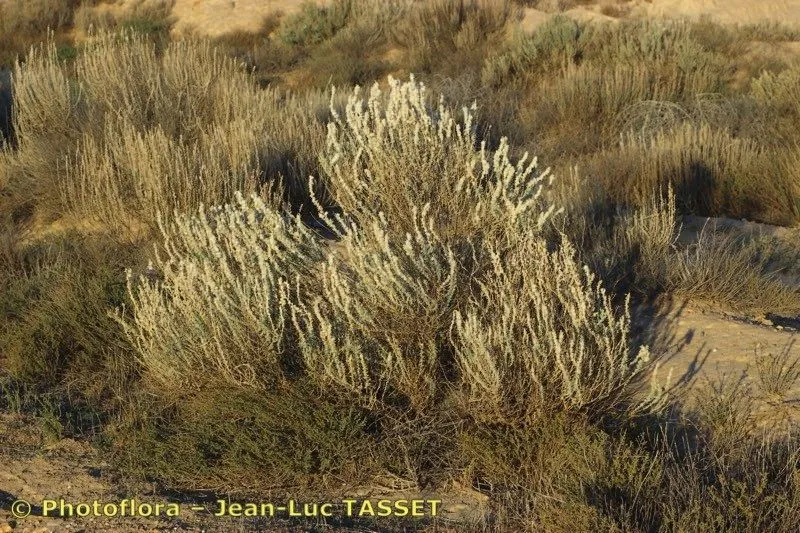
Author: (L.) Gueldenst.
Bibliography: Novi Comment. Acad. Sci. Imp. Petrop. 16: 555 (1772)
Year: 1772
Status: accepted
Rank: species
Genus: Krascheninnikovia
Vegetable: False
Observations: S. Spain, EC. Europe to China
Pamirian winterfat, scientifically known as Krascheninnikovia ceratoides, is a resilient plant species that belongs to the Amaranthaceae family. This unique plant has garnered attention since its first description in “Novi Commentarii Academiae Scientiarum Imperialis Petropolitanae” in 1772 by the eminent botanist Gueldenst.
One of the distinctive features of Pamirian winterfat is its remarkable adaptability to various climates and geographical regions. Its natural habitat extends from the southern parts of Spain, through Eastern and Central Europe, reaching as far as China. This widespread distribution speaks to its hardiness and versatility in withstanding different environmental conditions.
The plant’s structure and characteristics make it well-suited for survival in harsh environments. While detailed morphological descriptions are beyond the scope of this article, it’s widely recognized for its ability to thrive in arid and semiarid regions. This attribute makes Krascheninnikovia ceratoides an essential plant in the ecosystems where it naturally occurs, maintaining soil integrity and providing forage for native wildlife.
Pamirian winterfat is not only a testament to botanical diversity but also an important species for studies in plant adaptation and resilience. It continues to be a subject of interest for botanists and ecologists aiming to understand its role in the ecosystems it inhabits and its potential applications in sustainable land management practices.
Deu: hornmelde
Eng: pamirian winterfat
En: Pamirian winterfat
Zh: Tuo rong li
De: Hornmelde
Taken Oct 15, 2019 by Photoflora – Jean-Luc TASSET (©)
Taken Oct 15, 2019 by Photoflora – Jean-Luc TASSET (©)
Taken Oct 15, 2019 by Photoflora – Jean-Luc TASSET (©)
Taken Oct 15, 2019 by Photoflora – Jean-Luc TASSET (©)
Taken Oct 15, 2019 by Photoflora – Jean-Luc TASSET (©)
Taken Oct 15, 2019 by Photoflora – Jean-Luc TASSET (©)
Taken Oct 15, 2019 by Photoflora – Jean-Luc TASSET (©)
Taken Oct 15, 2019 by Photoflora – Jean-Luc TASSET (©)
Taken Oct 15, 2019 by Photoflora – Jean-Luc TASSET (©)
© copyright of the Board of Trustees of the Royal Botanic Gardens, Kew.
© copyright of the Board of Trustees of the Royal Botanic Gardens, Kew.
© copyright of the Board of Trustees of the Royal Botanic Gardens, Kew.
Family: Myrtaceae Author: (F.Muell.) K.D.Hill & L.A.S.Johnson Bibliography: Telopea 6: 402 (1995) Year: 1995 Status:…
Family: Rubiaceae Author: Pierre ex A.Froehner Bibliography: Notizbl. Bot. Gart. Berlin-Dahlem 1: 237 (1897) Year:…
Family: Sapindaceae Author: Koidz. Bibliography: J. Coll. Sci. Imp. Univ. Tokyo 32(1): 38 (1911) Year:…
Family: Asteraceae Author: A.Gray Bibliography: Pacif. Railr. Rep.: 107 (1857) Year: 1857 Status: accepted Rank:…
Family: Fabaceae Author: Medik. Bibliography: Vorles. Churpfälz. Phys.-Ökon. Ges. 2: 398 (1787) Year: 1787 Status:…
Family: Aspleniaceae Author: (Cav.) Alston Bibliography: Bull. Misc. Inform. Kew 1932: 309 (1932) Year: 1932…